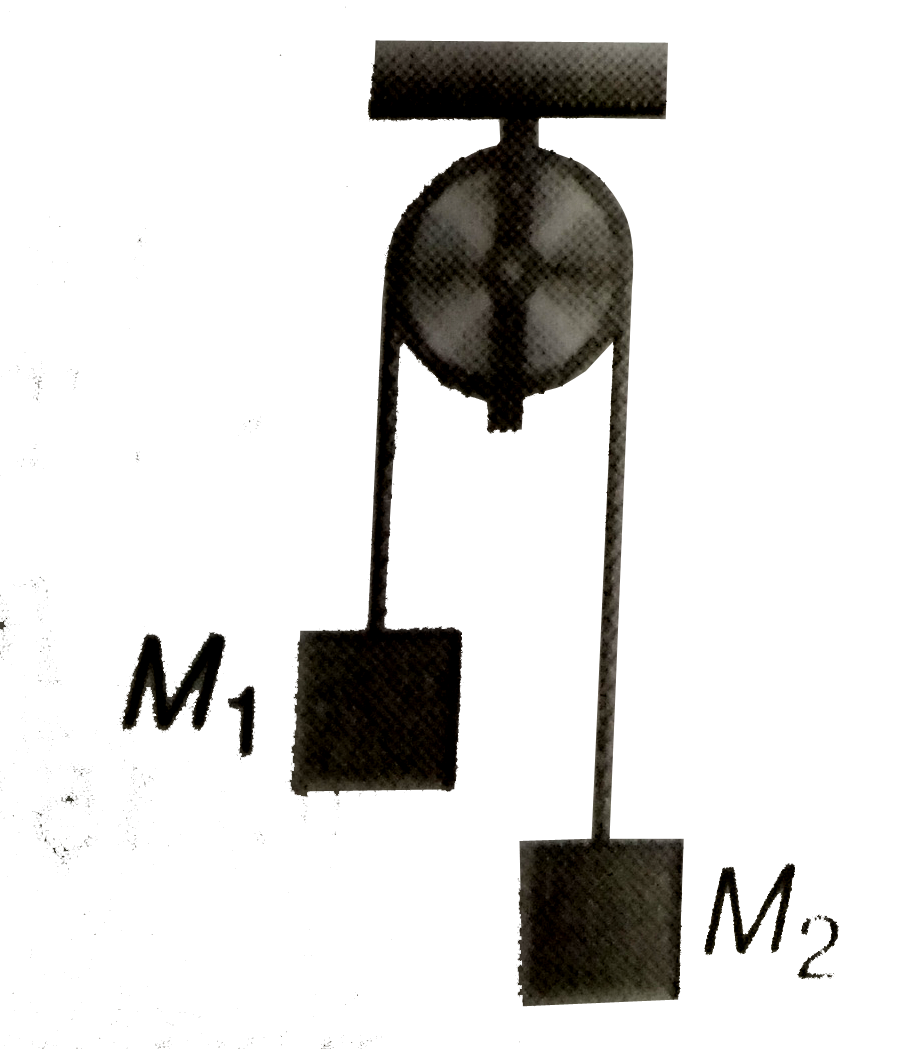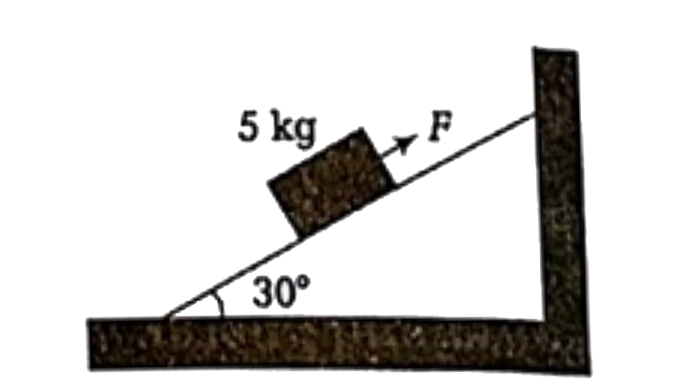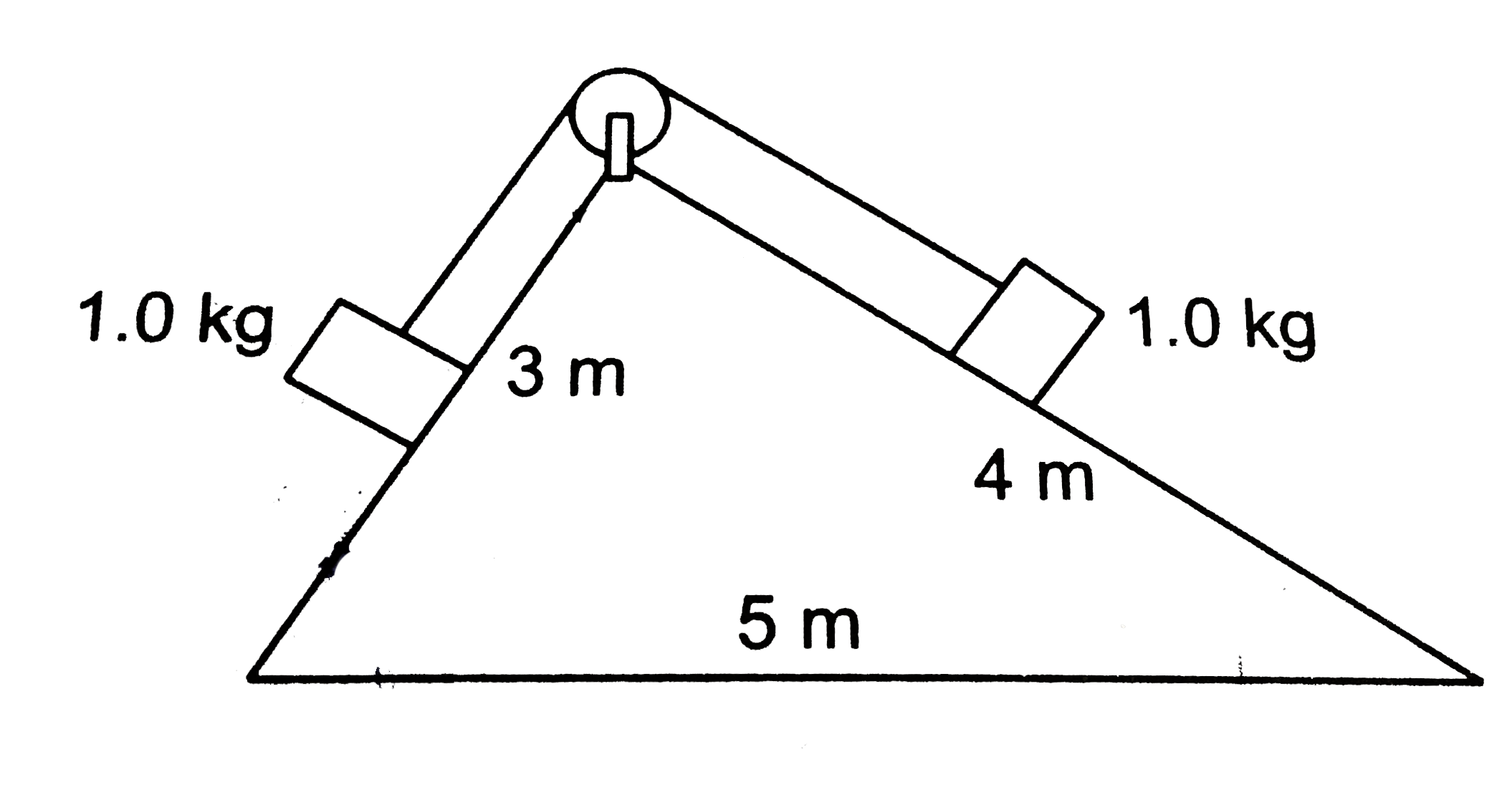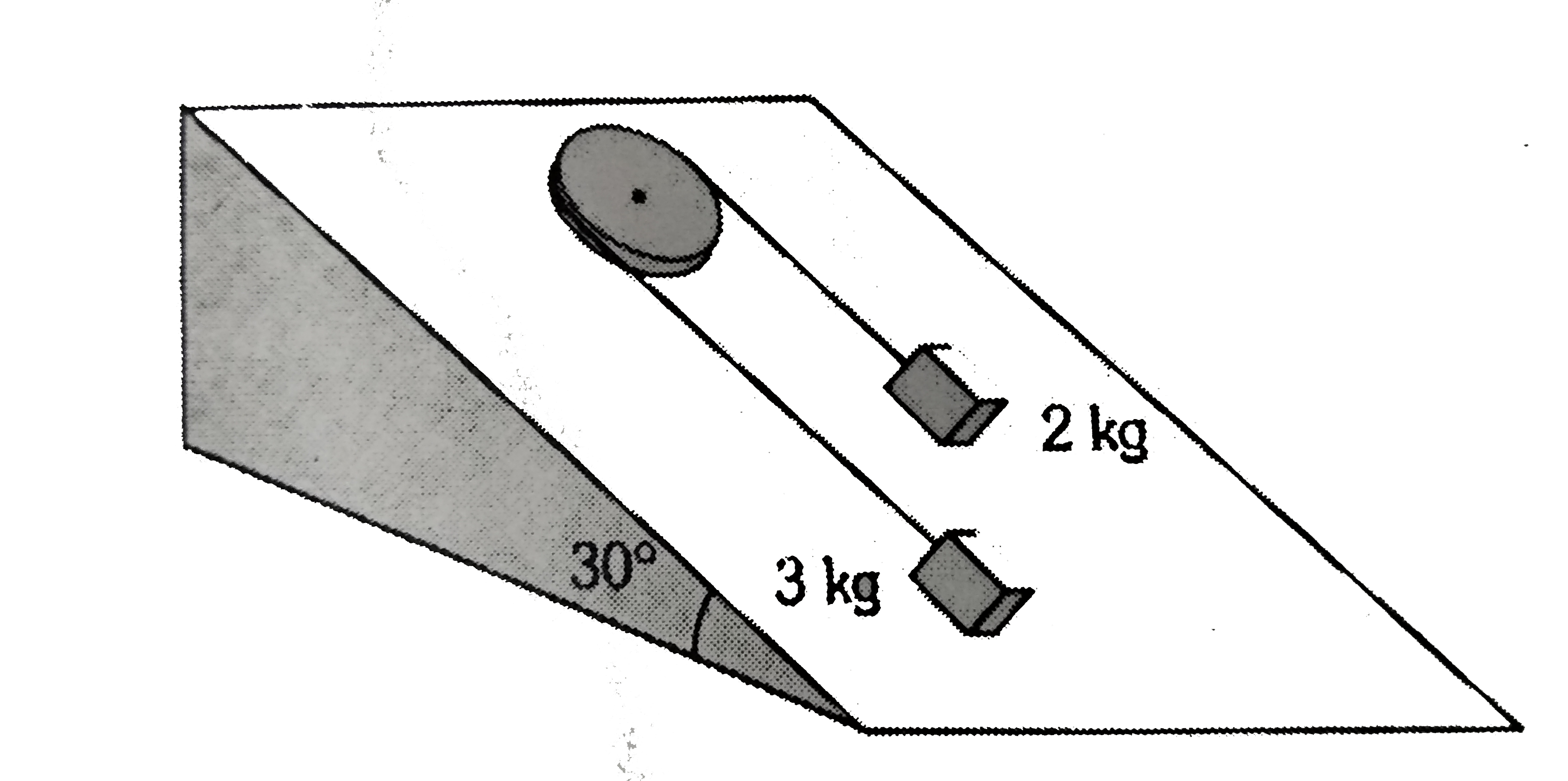A monkey pulls the midpoint of a 10cm long light inextensible string connecting two identical objects A and B lying on smooth table of masses 0.3kg continuously along the perpendicular objects of line joining the masses .The masses are found to apporoach each other at a relative acceleration of 5ms−2 when they are 6cm apart .The constant force applied by monkey is
4N
2N
3N
None of these
The correct Answer is:B
Relative acceleration

ar=2a
∴a=ar2=2.5m/s2
At point p
2Tcosθ=F
∴T=F2cosθ
At mass m
component of T along the other mass m is Tsinθ
∴a=Tsinθm=(F2cosθ)(sinθm)
∴F=2matanθ=2×0.3×2.5(3/4)
=2N
Topper's Solved these Questions
- BOOK - DC PANDEYCHAPTER - LAWS OF MOTIONEXERCISE - Comprehension9videos
LAWS OF MOTION
- BOOK - DC PANDEYCHAPTER - LAWS OF MOTIONEXERCISE - Subjective Question27videos
LAWS OF MOTION
- BOOK - DC PANDEYCHAPTER - LAWS OF MOTIONEXERCISE - Single Correct90videos
LAWS OF MOTION
- BOOK - DC PANDEYCHAPTER - KINEMATICS 1EXERCISE - INTEGER_TYPE15videos
KINEMATICS 1
- BOOK - DC PANDEYCHAPTER - LAWS OF THERMODYNAMICSEXERCISE - Level 2 Subjective18videos
LAWS OF THERMODYNAMICS
Similar Questions
A light smooth inextensible string connected with two identical particles each or mass m, passes through a light ring R. If a force F pulls ring, the relative acceleration between the particles has magnitude : P
View SolutionTwo smooth blocks of masses m and m' connected by a light inextensible strings are moving on a smooth wedge of mass M. If a force F acts on the wedge the blocks do not slide relative to the wedge. Find the (a) acceleration of the wedge and (b) value of F.
 View Solution
View Solution
Knowledge Check
- Question 1 - Select One
Two masses M1=5kg,M2=10kg are connected at the ends of an inextensible string passing over a frictionless pulley as shown. When masses are released, then acceleration of masses will be
 AgBg2Cg3Dg4
AgBg2Cg3Dg4 - Question 2 - Select One
Two masses M1=5kg,M2=10kg are connected at the ends of an inextensible string passing over a frictionless pulley as shown. When masses are released, then acceleration of masses will be
 AgBg/2Cg/3Dg/4
AgBg/2Cg/3Dg/4 - Question 3 - Select One
A force F=75 N is applied on a block of mass 5 kg along the fixed smooth incline as as shown in the figure. Here gravitational acceleration g = 10 m s−2 . The acceleration of the block is
 A10ms−2 downwards the inclineB10ms−2 upwards the inclineC5ms−2 downwards the inclineD5ms−2 upwards the incline
A10ms−2 downwards the inclineB10ms−2 upwards the inclineC5ms−2 downwards the inclineD5ms−2 upwards the incline
A constant force F=m_2g/sisappliedontheblockofmassm_1asshown∈figure.Thestr∈gandthep≤––––yarelightandthesurfaceofthetab≤issm∞th.F∈dtheae≤rationofm_1
 View Solution
View SolutionTwo blocks of masses 2.0 kg and 3.0 kg are connected by light inextensible string. The string passes ove an ideal pulley pivoted to a fixed axel on a smooth incline place as shown in the figure. When the blocks are released, find magnitude of their accelerations.
 View Solution
View SolutionTwo balls of masses m1=5kg,m2=10kg are connected by a light inextensible string. A horizontal force F = 15 N is acting on the ball m2 along the line joining two balls as shown. What is the (a) acceleration of the balls (b) tension in the string?
 View Solution
View SolutionA body is moving with a velocity 5m/s along a striaght line.A force of 10N is applied to the body perpendicular to the line of motion. If the body is of mass 2kg, then the acceleration of the body along the initial straight line of motion is :
View SolutionTwo masses are joined together by a massless, inextensible string. A vertical force of 30N applied to the upper mass gives the system a constant upwards accelration of 3.2 m/s2. If the tension in the connecting string is 18N, what is the lower mass?
View Solution

